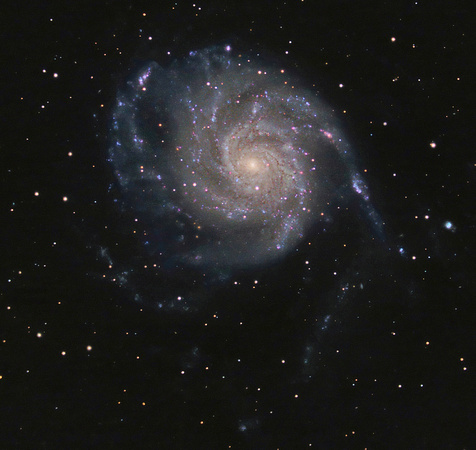Canon 350D Hap Griffin Baader Mod43x180sec at iso 1600
30 Darks/Flats/Bias
Celestron 9.25 reduced 0.63I finally got a decent shot of this low surface brightness masterpiece of a galaxy.
The Pinwheel Galaxy - M101, or NGC 5457 - is a face-on
spiral galaxy about 27 million light-years away in the
constellation Ursa Major and is a relatively large galaxy compared to the
Milky Way. With a diameter of 170,000 light-years it is nearly twice the size of the Milky Way. Less is known about the mass of M101. A frequently cited number is an equivalent mass of about 16 billion
solar masses. That value is almost certainly too low, and probably stems from M101's low surface brightness. New insights in its HII regions and rotational velocities have put the number between 100 billion and 1 trillion suns.
M101 is know for it's large number of HII regions that contain enormous clouds of high density hydrogen gas contracting under its own gravitational force. Eventually, when the localized hydrogen contracts enough for fusion processes to begin, stars are born. Consequently, HII regions are places that often contain large numbers of extremely bright and hot young stars giving them their characteristic blue color. You can also see some Halpha regions (pinkish red) in this image as well.
M101 was discovered by
Pierre Méchain on March 27, 1781, and he subsequently communicated his discovery to
Charles Messier who verified its position and added it to the Messier Catalogue as one of the final entries.
May 28, 2008


